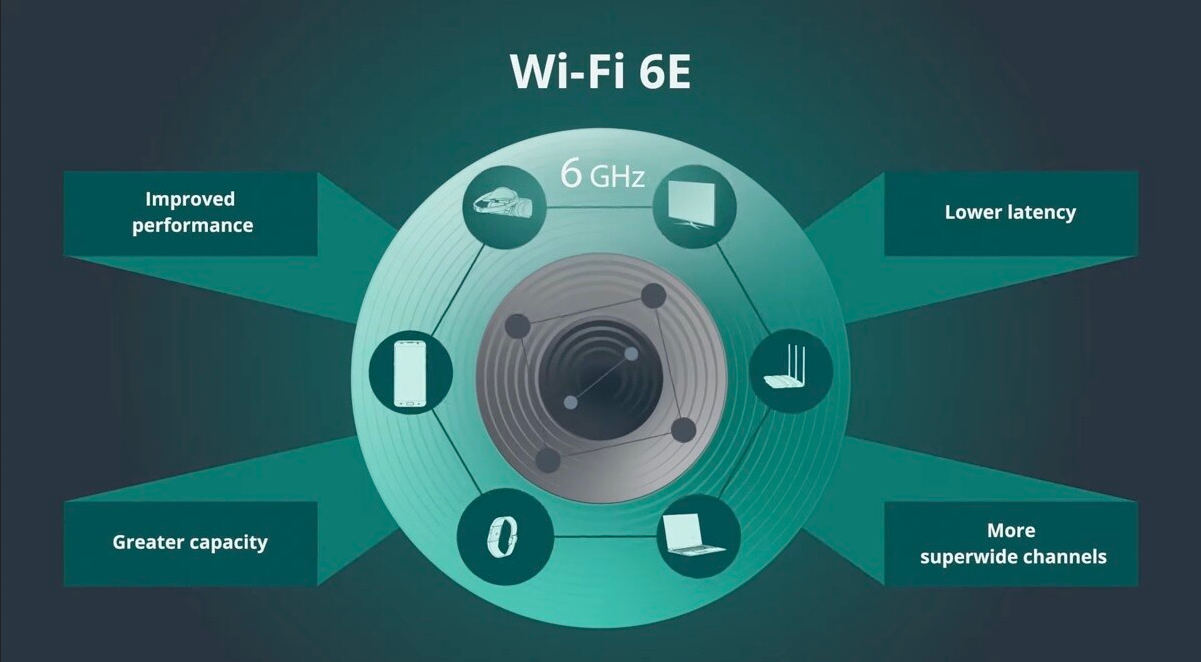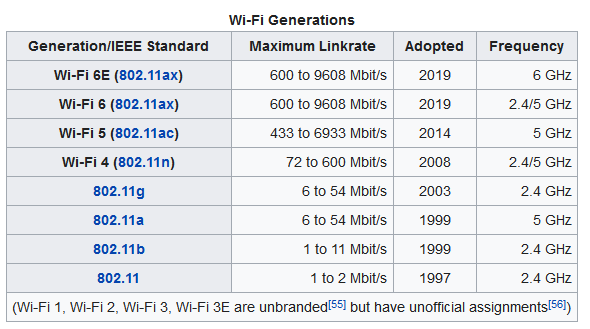
Wi-Fi 6 hardware is finally arriving on the market, and you’ll be seeing more and more of it released throughout 2020. But people are already talking about something new: Wi-Fi 6E, which promises to reduce Wi-Fi congestion further.
Wi-Fi 6 and previous generations of Wi-Fi use the 2.4 GHz and 5 GHz radio bands. A “Wi-Fi 6E” device is one that is capable of operating on the 6 GHz band, too.
The 6 GHz spectrum should work similarly to WiFi 6 over 5 GHz but offers additional non-overlapping channels. As the Wi-Fi Alliance puts it, Wi-Fi 6E allows for “14 additional 80 MHz channels and 7 additional 160 MHz channels.” These channels wouldn’t overlap with each other, which will help reduce congestion, particularly in areas where lots of networks are operating.
All the devices communicating on the 6 GHz spectrum would also be Wi-Fi 6 devices. There wouldn’t be any older devices using standards like Wi-Fi 5 (802.11ac). All devices on the 6 GHz channels will be speaking the same language and can use Wi-Fi 6’s new congestion-busting features.
Wi-Fi 6E Is Waiting on Regulatory Agencies Outside the USA
If 6 GHz is so useful, why didn’t existing Wi-Fi standards already use it? Well, they couldn’t. Regulatory agencies didn’t allow Wi-Fi to use the 6 GHz band, instead reserving it for other purposes.
Back in October 2018, the US Federal Communications Commission proposed offering the 6 GHz spectrum for Wi-Fi and other “unlicensed” uses. That didn’t happen immediately, and Wi-Fi 6E began to take shape prior to its regulatory approval. On April 23, 2020, the FCC voted to open the 6 GHz band to Wi-Fi 6E and other uses later this year, so Wi-Fi 6E devices are cleared to launch in the US.
The Wi-Fi Alliance’s pre-CES 2020 announcement of Wi-Fi 6E acknowledges this, referring to 6 GHz as “an important portion of unlicensed spectrum that may soon be made available by regulators around the world.” Note the word “may” rather than the word “will”—it’s up to government regulators, not the industry.
The Wi-Fi Alliance also says that “Wi-Fi 6E devices are expected to become available quickly following 6 GHz regulatory approvals.” With the FCC’s vote, we’re about to see more products announced and scheduled for release.
The industry already seemed eager for regulators to allow Wi-Fi 6. During CES 2020, Broadcom announced several system-on-a-chip products that router manufacturers can purchase to create Wi-Fi 6E-enabled access points.
Intel announced that it will have WI-Fi 6E chips available in January 2021, so it seems likely that Wi-Fi 6E will start appearing in 2021 and become more common heading into 2022—at least in the USA.
However, despite all the excitement and interest, there’s still no official timeline for when regulators around the world will make the spectrum available for unlicensed use. Wi-Fi 6E has no definitive release date in most countries.
Wi-Fi Over 6 GHz Requires New Devices
Wi-Fi 6E devices will be backward compatible with Wi-Fi 6 and previous Wi-Fi standards. But, to take advantage of those new 6 GHz channels in Wi-Fi 6E, you’ll need to be using devices that support it. In other words, you’ll only be using Wi-Fi 6E once you pair a Wi-Fi 6E-enabled client device (like a laptop or smartphone) and a WI-Fi 6E-enabled access point.
For example, even if you have a bunch of Wi-Fi 6 devices and a Wi-Fi 6E-enabled router, none of your devices will communicate over Wi-FI 6E. They’ll all be using Wi-Fi 6 on the typical 5 GHz or 2.4 GHz channels.
…
In technology, there’s always something new on the horizon. For Wi-Fi right now, that’s Wi-Fi 6E.
Some Wi-Fi 6 devices, like routers, laptops, smartphones, are already for sale. Many more will be released throughout 2020. Wi-Fi 6 isn’t an extreme upgrade in terms of speed, but it will lead to faster Wi-Fi along with less wireless congestion and perhaps even extended battery life for your devices.
Meanwhile, Wi-Fi 6E isn’t here at all yet. There’s no definite deadline for when regulations will be changed in most countries and manufacturers haven’t announced when products with Wi-Fi 6E will be available. Even after you can buy Wi-Fi 6E-enabled devices, the main benefit will be reduced congestion through additional wireless channels. That’s a great long-term goal, but we don’t think it’s worth holding out for if you’re thinking about upgrading to Wi-Fi 6 gear.
…But Don’t Rush to Buy Wi-Fi 6, Either
Of course, you don’t necessarily need to run out and buy a new Wi-Fi 6-enabled router today. Most of the devices you have likely don’t support Wi-Fi 6 yet.
For example, Apple’s iPhone 11 models do support Wi-Fi 6, but older iPhone models don’t. Even Apple’s new MacBook Pro models released at the end of 2019 don’t include Wi-Fi 6 support. New high-end Samsung phones like the Galaxy S10 have Wi-Fi 6 hardware, but most Android phones don’t. Only a handful of PC laptops support Wi-Fi 6. It’s very early days for Wi-Fi 6.
There’s a good chance that, over the next few years, new devices you purchase will increasingly have Wi-Fi 6. But you probably won’t get Wi-Fi 6E on those devices—just Wi-Fi 6. That’s fine. Wi-Fi 6E sounds nice, but it’s not here yet.
Samsung has always been at the forefront of developing groundbreaking wireless communication technologies. Continuing that legacy, the Galaxy S21 Ultra provides users with next-level mobile communication experiences thanks to the cutting-edge Wi-Fi 6E, enhanced Intelligent Wi-Fi, and OpenRoaming. The Galaxy S21 Ultra is one of the first smartphones to support Wi-Fi 6E using the 6GHz band, providing faster, more reliable connections for its users.
Check out this short video from Jong-Mu Choi, Vice President and Head of Convergence R&D Group, Mobile Communications Business, Samsung Electronics, to learn how Samsung is innovating Wi-Fi connectivity for Galaxy users.








Leave a Comment